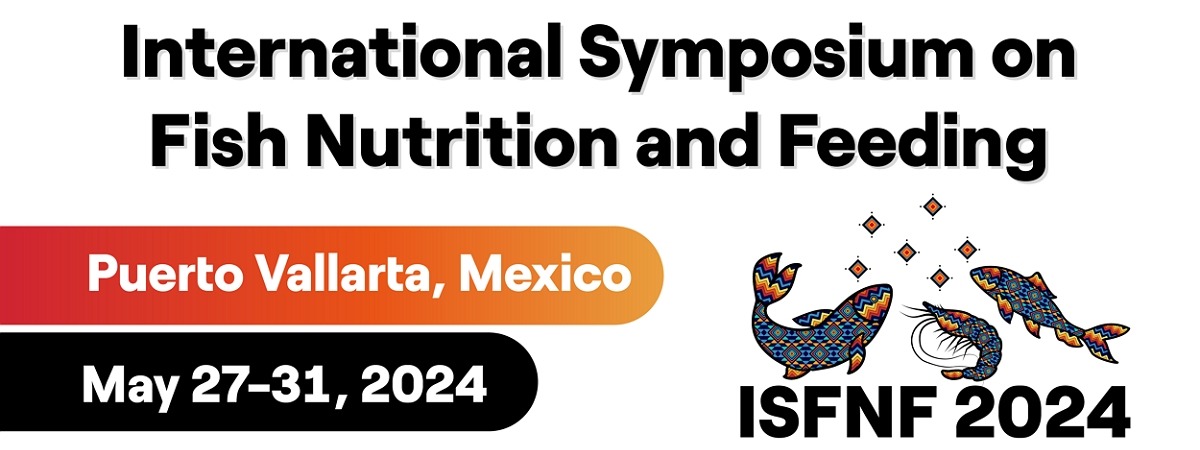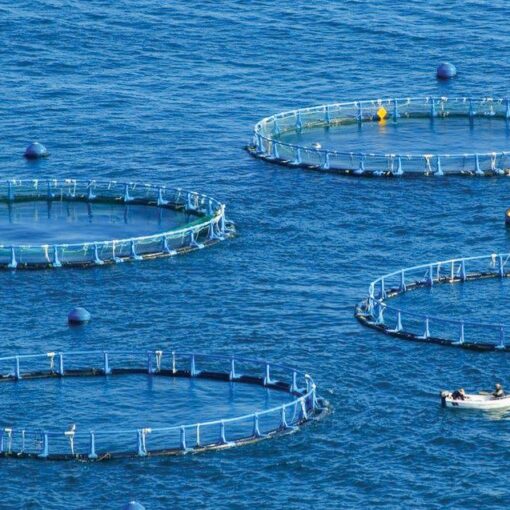Visitas: 164
Fulfilling the potential of aquaculture to contribute positively to food system transformation will require better accounting of the environmental performance of different types of production systems, and interventions that facilitate upscaling of aquatic farming to support sustainable diets.
We contend that the existing literature overlooks large ‘‘performance gaps’’ in existing conventional aquaculture systems, especially freshwater pond systems, that could be rapidly narrowed to meet future global demand for more sustainable aquatic foods.
Intensification of fed aquaculture has consequently shifted resource needs from on-farm to: (1) other agricultural land, often in locations remote from the farm, for production of crop-based feed ingredients; (2) open waters for fish-based feed ingredients (fishmeal and fish oil); and (3) additional exogenous energy inputs (infrastructure, pumps, aeration, etc.) and/or land that may be used to maintain water quality (i.e., settling ponds).

Nine intervention areas are identified for improving the productivity and environmental performance of global aquaculture: species choice, genetic improvements, farm technologies and practices, spatial planning and access, disease reduction, feed, regulations and trade, postharvest processing and distribution, and financial tools.
Challenge: The Performance Gap in Aquaculture
Fish have metabolic advantages over terrestrial animals, as they are cold blooded and neutrally buoyant in water and thus do not need to expend energy maintaining body temperature, building supportive structures, or fighting gravity.
Aquatic animals subsequently have biological advantages over terrestrial livestock in terms of their resource-use profiles. However, given the short history of farming for most aquaculture species, few have reached the levels of efficiency seen in the highly homogenized terrestrial-animal production systems, such as poultry farming.
Benchmarking the environmental performance of aquatic foods.
Feed conversion ratio (FCR) is commonly used as an efficiency indicator in aquaculture. The simplicity of FCR, however, allows farmers to easily benchmark their performance and recognize farming improvements.
FCR can also serve as an indicator of environmental performance, as feed production remains the primary driver behind most environmental impacts related to fed aquaculture systems.
“Where more comprehensive efficiency measures are needed, life cycle assessment (LCA) enables evaluation of environmental performance and trade-offs on a multi-criteria basis.”
LCA is a quantitative environmental assessment framework used to assess the environmental performance of a product or service throughout its lifecycle stages. The environmental impact assessment results produced by an LCA commonly detail impacts such as global warming, eutrophication, land use, and freshwater use, but may also include more aquatic-food-specific impacts, such as biotic resource use.
Comparing the evolution of animal farming sectors
Farming of aquatic organisms dates back millennia, but it was only in the 1980s that shrimp and salmon became the first mass-produced and widely traded farmed aquatic foods. Profitability and, to some extent, environmental sustainability concerns motivated large investments in R&D for improving Atlantic salmon production systems, genotypes, and feed.
Tilapia was domesticated (cultivated for food) by humans before Atlantic salmon and has similar genetic potential with regard to improved growth rates and feed-use efficiency but has yet to show the same FCR gains. This is most likely explained by more limited R&D in breeding and feed, poorer dissemination of improved strains, less access to quality feed, higher metabolic rates of tropical finfish, and more heterogeneous farming systems.

Development and adoption of improved genetic strains suited to individual farming systems and commercial tailored feed has been especially slow. Feed efficiency is only one of many breeding objectives in selective breeding programs.
Improving Aquaculture’s Environmental Performance
Closing the performance gap in aquaculture appears to hold considerable potential for both productivity and environmental performance gains.
Interventions can help to reduce the performance gap in global aquaculture and thereby improve resource-use efficiency, profitability, and overall environmental performance. Interventions that are financially feasible for most farmers are sufficiently scalable to contribute to global change, and importance to food security should be prioritized.
Species choice
Apart from a capacity for reproducing in farm systems, aquaculture species have historically been chosen based upon their temperature tolerance, resource-use efficiency, feed preferences, and ease of farming.
“This allowed for low production costs and accessible aquatic foods (defined here as those costing less than half the global production weighted average).”
Recently, however, there has been a growing trend toward farming luxury aquatic foods (those costing more than the global weighted average), driven by larger profits, changing consumer preferences, and reduced wild fish supplies.
Selecting more tolerant and less resource-demanding species is therefore a precursor for lowering environmental impacts , but this is inevitably challenged by market demands. This could, to some extent, be overcome by nudging consumer behavior and valueadded products.
Genetic improvements
There are relatively few distinct strains domesticated for aquaculture, and only around 10% of global production is based upon species that have been improved via selective breeding programs. The main longterm objectives of selective breeding are body conformation, physiological tolerance, edible yield, appearance, disease resistance, reproductivity (age of spawning, sex ratio, and fecundity), resistance to pollution, feed efficiency, and growth rate. Allocating more resources toward genetic breeding programs for a more diverse set of aquatic foods could therefore drastically boost production.
Farm technologies and practices
Farming in ponds could be greatly improved through better management practices, improved system design, and efficiency. Better record keeping, ideally supported by water quality sensors, diagnostics, and monitoring, could be key here, allowing farmers to optimize production and improve feed and chemical use.
Integration with additional species and/or agriculture may further improve sustainability outcomes and help maximize production through better utilization of feed and by-products, which could mitigate nutrient emissions per unit of farmed output.
Spatial planning and access
Access to affordable land and/or water for farming is critical for profitable aquaculture, which is why many previously unclaimed areas, such as lakes and mangrove forests, have historically been exploited. Developing well-designed spatial plans would help protect essential ecosystems, respect ecosystem carrying capacities, and increase overall farm profitability. These plans need to account for the right set of indicators and stakeholders and ensure enforcement.
Disease reduction
Apart from choosing tolerant species and spatial planning, disease risks can be reduced through a range of interventions, from simple biosecurity measures and better hygiene to development of vaccines and the use of specific-pathogen-free and resistant seeds.
Feed
In addition to being environmentally sustainable, alternative novel feed ingredients need to be cost effective, available in sufficient quantities year-round, nutritious, free from contaminants and other undesirable compounds, able to endure a range of forms of processing, palatable to farmed aquatic organisms, and able to support the desired nutritional traits of seafood such as omega-3.
Feed ingredients must therefore be considered through the interacting nutritional effects of the feed as a whole. Interactions with other markets also need to be factored into this equation, as the same set of feed resources is used in terrestrial animal production, and sometimes feed resources compete with direct human consumption or for agricultural land.
Regulations and trade
The role of certification remains limited, and the standards of the two largest certification groups—ASC and the Global Aquaculture Alliance Best Aquaculture Practices (GAA-BAP)— cover only 3% of global aquaculture production.
Regulations can address more comprehensive sets of farms and farming practices but have also been seen as a barrier for potential grow out sites, therapeutics, access to fresh water, effluent discharge, and the use of genetically modified organisms (GMOs), non-indigenous species, and novel feed ingredients. Regulations should thus be drafted to discourage detrimental farming practices, without hampering otherwise effective interventions.
Post-harvest processing and distribution
The FAO (2011) estimates that 35% of all seafood is lost or wasted worldwide. Reduction strategies for food loss and waste range from simple changes in practices, such as handling fish with care, avoiding contamination, using insect nets, improved drying techniques, better hygiene and public awareness, to refrigeration, improved infrastructure, clean water, improved packaging material, food safety legislation, and promotion of value-added products from low-value fish species.
Large-scale processing can improve possibilities for utilizing byproducts for food, feed, or industrial uses. By utilizing these resources, larger volumes could be produced with a similar overall environmental footprint, resulting in lower impacts per volume and better resource efficiency.
Financial tools
Many smallholder farmers cannot benefit from farm improvements, such as quality feed, seed, and disease diagnostics, due to limited access to credit. Enabling insurance providers and cooperatives could here play important roles in alleviating risk and gaining access to credit and markets among smallholder aquaculture farmers. Access to shared infrastructure, improved fry, cheaper feeds, and markets could be improved by upscaling production of a limited selection of species.
Discussion
Aquaculture holds potential to improve the sustainability of animal based foods and the overall food system, but additional efforts are urgently needed for it to reach its full potential.
In some cases, simple improvements have not been realized yet due to limited know-how among aquaculture farmers and other supply chain actors. Financial barriers and perceived risks are also important constraints.
“Other interventions would require longer-term resource commitments. These include upgrading farm infrastructure, establishing genetic improvement programs, and development of vaccines and novel feeds. A third group of interventions could provide incentives for farmers and industry to adopt more environmentally sustainable practices.”
These include spatial planning, stricter environmental regulations, and financial incentives encouraging better production practices. Strengthening R&D together with widespread training programs and extension services for these farmers could offer a more efficient way forward for making aquatic foods more accessible.
Adding all these together, we can expect that global aquaculture yields could increase substantially over the next decade, while reducing the environmental impact per unit of output. Improving production systems, management practices, and genetic strains could reduce FCR and environmental impacts by roughly 25%.
LCA, remains insufficient with respect to the availability of methods for assessing all sustainability aspects relevant to the growth of aquatic foods.
Conclusions
We contend that financial incentives and regulatory efforts, alongside investment in genetics, feed, and farm management, including better record keeping and data management by individual farmers, are needed to boost aquaculture production, improve resource-use efficiency, and reduce environmental impacts.
Sustainable intensification of existing systems for increasing accessibility of aquatic foods, based on scaling of proven but infrequently adopted interventions, could contribute substantially to realizing sustainability goals in aquaculture. However, these systems and improvements also need to be better benchmarked using LCA and complementary frameworks, to identify overall potential sustainability gains.
This is a summarized version developed by the editorial team of Aquaculture Magazine based on the review article titled “INTERVENTIONS FOR IMPROVING THE PRODUCTIVITY AND ENVIRONMENTAL PERFORMANCE OF GLOBAL AQUACULTURE FOR FUTURE FOOD SECURITY” developed by: PATRIK JOHN GUSTAV HENRIKSSON, MAX TROELL, LAUREN KATHERINE BANKS, BEN BELTON, MALCOLM CHARLES MACRAE BEVERIDGE, DANE HAROLD KLINGER, NATHAN PELLETIER, MICHAEL JOHN PHILLIPS, AND NHUONG TRAN. The original article was published on SEPTEMBER 2021, through ONE EARTH under the use of a creative commons open access license. The full version can be accessed freely online through
this link: https://doi.org/10.1016/j.oneear.2021.08.009













